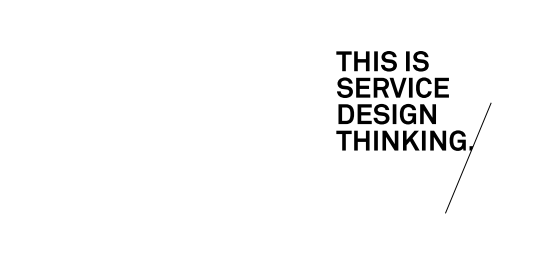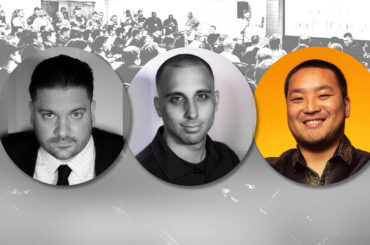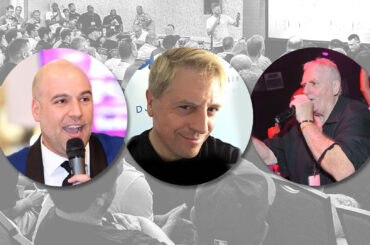Unlike producers of tangible products, DJs sell an experience, in many ways an illusion, and have more in common with “expertise-based” services—doctors, consultants, hotels and tourists bureaus—that use the transfer of skills and tacit knowledge to solve problems and create value for customers.
As such, services are often tough to price, nearly impossible to scale or standardize (as many DJ franchisors have discovered), and can be extremely labor- or cost-intensive. And when you’re not getting it completely “right” with a customer, it can be difficult for a DJ business owner to understand why.
An emerging discipline that management consultants and service business owners are beginning to embrace is Service Design, which can help diagnose “pain points,” fix problems, roll out new features or lines of service, enter new markets and identify opportunities for gaining competitive advantage through continuous, iterative improvement.
What is service design? As an analogy, it’s helpful to think of your DJ service as a movie—a dynamic process that takes place over a period of time, according to This Is Service Design Thinking (Wiley Books). The movie consists of a series of static pictures, which combine to make a moving sequence. Service Design Thinking uses this analogy to deconstruct service processes into single touchpoints and interactions. These, when combined, create service moments. Every service process follows a three-step transition of pre-service period (bride gets in touch with your service), the actual service period (when she actually experiences your service), and the post-service period.
And just like a movie, any superior service should maintain a sense of expectation without creating anxiety or strain on the customer. To do this, you should be holding your customers’ interest—and, thusly, their guests—by providing a good narrative.
Some of the main advantages of service design include:
It’s People-Centered
Generally, people use DJ services to solve problems and enhance their lives. So naturally, in order to best understand your service and how to improve it, you have to put people at the center of the process—not just the users of your service, but all the stakeholders involved in production as well.
“That’s why service designers use ethnomethodology, in situ observation, semi-directed interviews, and other qualitative research tools during the ‘discovery’ phase of service design projects,” says Marshall Sitten, founder of NYC Service Design Community. “They’ll enable you to learn as much as possible about the culture, needs, rituals, social codes, behaviors and attitudes of all the stakeholders of your service, which can reveal not only the most obvious opportunities or challenges facing your service, but also the more subtle ‘weak signals’ that indicate possibilities for innovation.”
The insights generated from people-centered design research can help your business avoid the “disease of familiarity” and groupthink, says Sitten, and force you to recognize realities that data alone—your bottom line, for example—can overlook.
It’s Inclusive & Collaborative
Just like in the discovery phase of a service design project, the “co-design” phase – the actual process of brainstorming and prototyping improvements to your service based on the research findings—engages all of the people involved in the production of your service. Customers, front-line admin staff, fellow vendors, catering execs and other stakeholders are included in the design process to act as both a source of new ideas and as an important reality check.
It’s Multi-Disciplinary
Service design is not a brand new field. It cobbles together teams with multiple areas of expertise, research, tools and techniques from established disciplines—economics, behavioral psychology, anthropology and user interaction, to name just a few—and applies them through a new methodology. As you encounter new kinds of challenges in service design—perhaps an unfamiliar industry, market condition or cultural context—your team will necessarily learn, grow and acquire new capabilities, adding to the creative potential.
“This multi-disciplinary, research-based approach enables service designers to examine services on several levels,” says Sitten. “Some service designers focus on a service’s ‘touchpoints’—the parts of your service that interact with people, organizations, or even other services (a concierge is a touchpoint, as is a website).”
Sitten says other service designers seek to understand and improve how a service interacts with the systems upon which it depends in order to function, such as its labor force, IT infrastructure or its supply chain—multi-system ops take note. “And others still look to answer the larger strategic questions, such as market positioning or whether the service is delivering on its ‘salient attributes’—those characteristics which give the service perceived value in the eyes of the customer,” says Sitten.
Service design incorporates several tools for improving services. They include:
Customer Journey Maps: An effective diagnostic tool that illustrates the client’s path through the entire timeline of a service interaction, from awareness (how did the client come to learn about your service?) to post-service feedback, documenting each interaction and touchpoint along the way.
Service “Blueprints”: Two-dimensional diagrams of the structures and processes involved in service production that show which “back-stage” processes (such as customer databases or order fulfillment) are required to support “front-stage” processes visible to the customer. Such diagrams can be extremely useful for visualizing complex service systems and identifying potential bottlenecks and “pain points.”
When you truly commit to using service design to help your business, says Sitten, “you are committing to opening yourself up to gaining new—and possibly exciting—insights about your business, your competition, your market and your services.”







